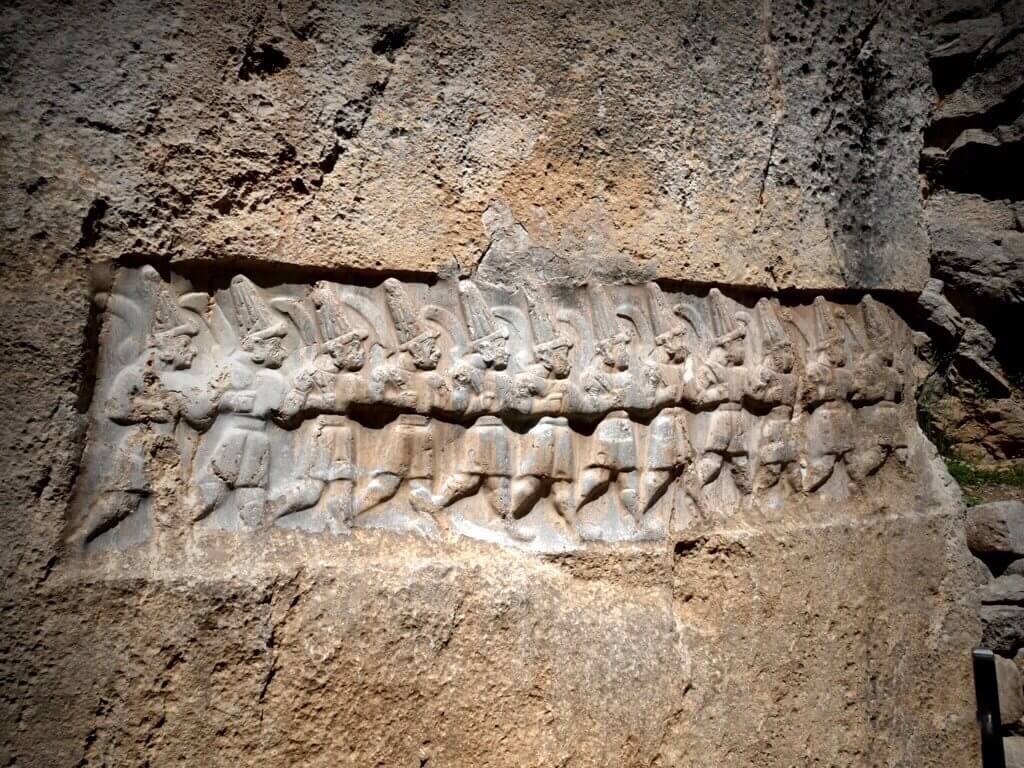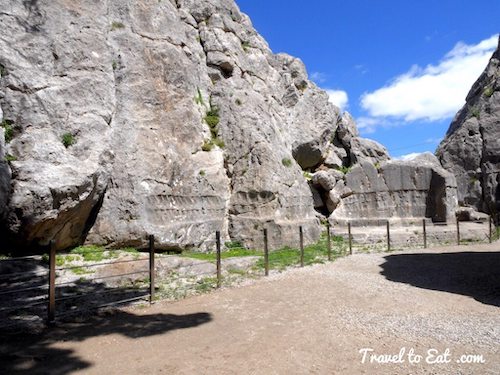
Yazilikaya (written rock) is the largest known Hittite rock sanctuary. It may have served as a place for the celebration of the arrival of the New Year each spring. The main part of the Sanctuary is formed by the roofless, court-like, Chamber A (to the right) that was separated from the outside by a substantial building. The sides of the chamber bear representations of the gods of the Hurrian Pantheon in high relief. The deities are aligned in two rows, perhaps in procession, with females on the right side and males (with two exceptions) on the left. The name of each deity is given in Luwian hieroglyphs above its projecting hand. These two rows are directed towards the main scene on the back wall where the Storm God, Tesup, and the Sun Goddess, Hepat meet. The largest relief in the chamber, however, is on the wall opposite the main scene and depicts Tudhaliya IV, Great King of Hattusa. It was during his reign, in the late 13th century BC, that the complex was given its present form. Yazilikaya is an open air, natural rock shrine at a place where a spring of fresh water once flowed. The site has characteristics similar to other Anatolian spring-sanctuaries, and may well have been a place of worship for hundreds or thousands of years before the rise of Hittite power.
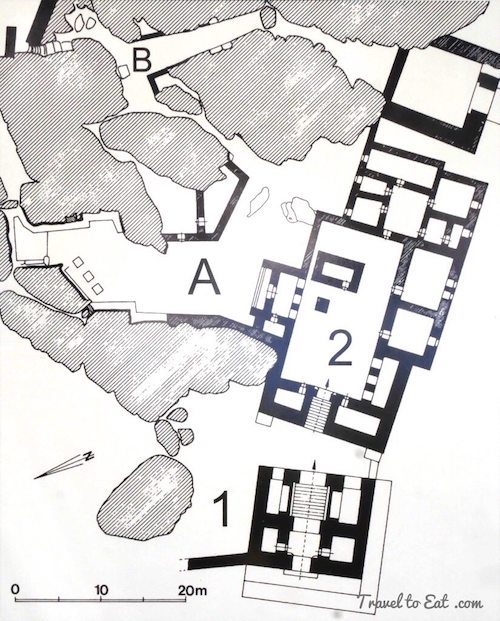
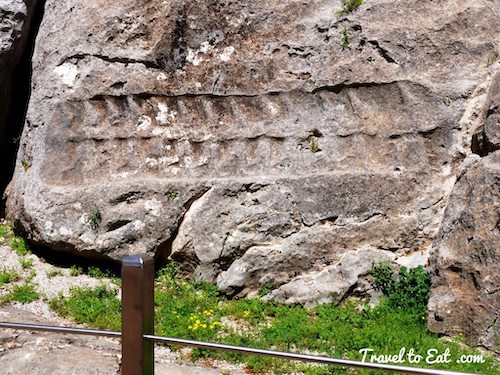
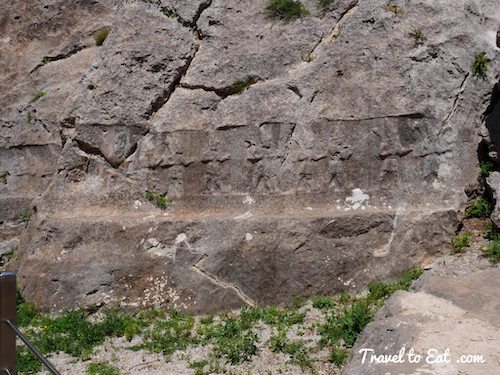
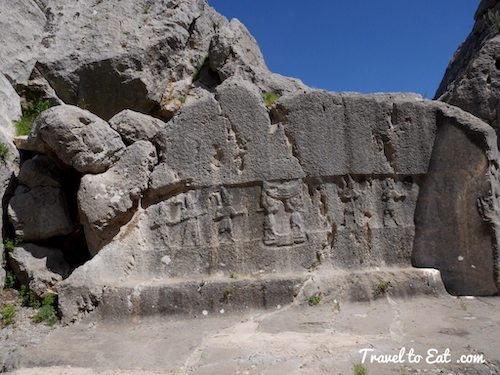
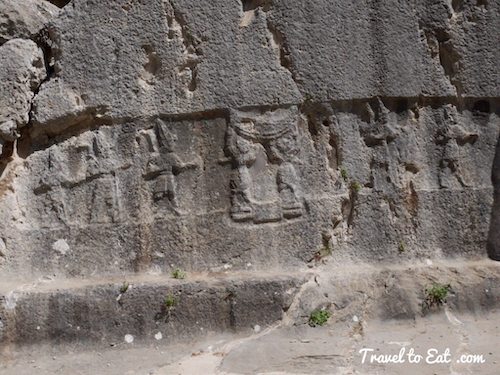



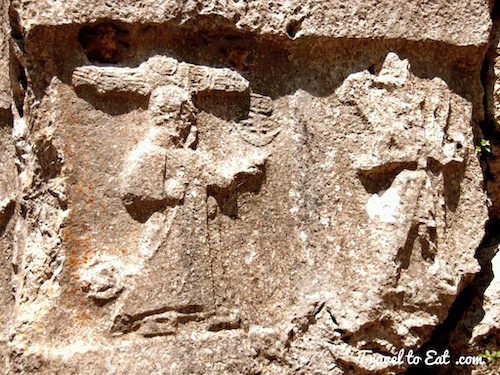
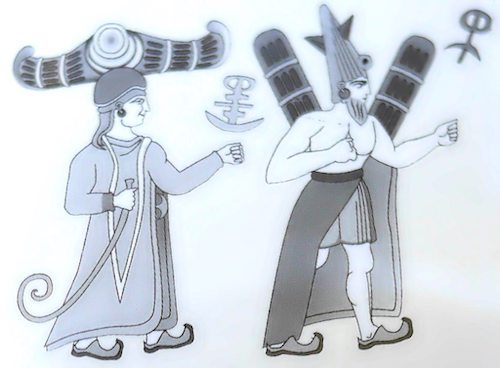
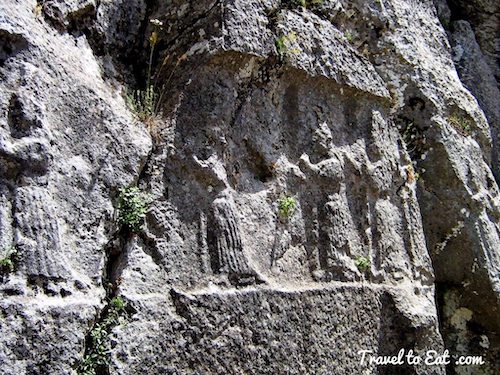
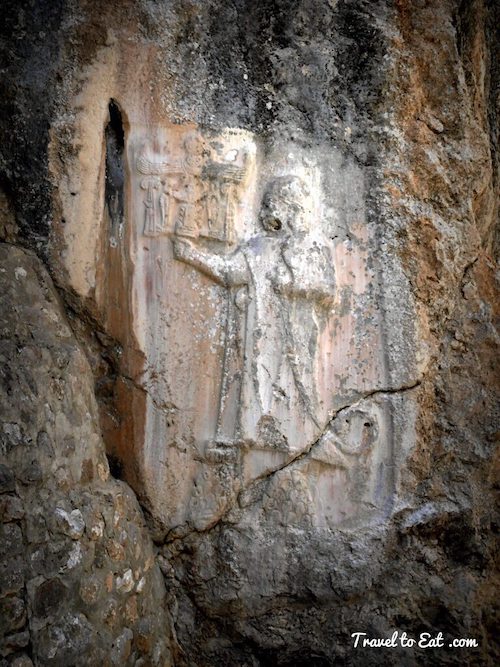
The sanctuary of Yazilikaya lies outside the ancient city of Hattusa, near where a spring issued from the rocks and flowed through a small alcove. Shaded by trees and carpeted with grass and flowers, the power and beauty of the alcove must have inspired the Hittites and earlier peoples to worship there. It is probable that by the 15th -13th centuries BC several temples were built at the site, although crumbling foundations are all that remain to be seen. The principal interest of Yazilikaya, however, lies not in the fallen temple buildings but in the figures of deities carved on the rock walls of the two natural chambers of the roofless sanctuary. The figures in the larger chamber (Chamber A) give the impression of two processions, one of male and one of female deities, advancing on either side towards the rear wall, where the principal god and goddess, emphasized both by their positions and by their greater size, meet one another at the focal point of the chamber. The west wall is adorned with reliefs of gods, while those on the east wall are devoted to goddesses.
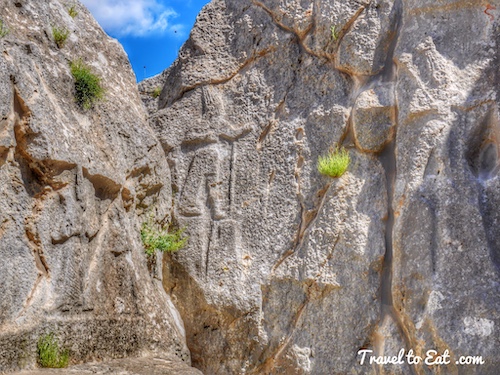
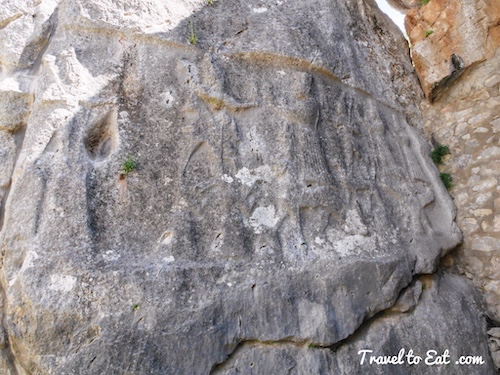
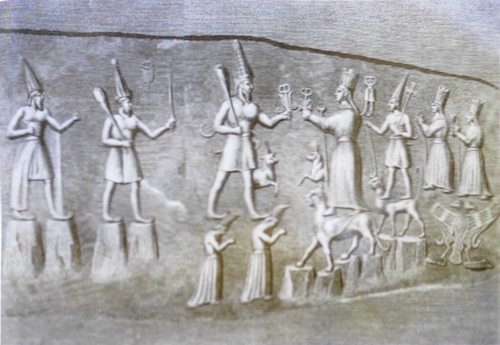
EC Krupp has interpreted the carvings in the two galleries as a cosmic narrative depicting the renewal of creation and the continuity of the Hittite royal line. “Facing Teshub in the central relief in Chamber A is Hepat, the Hurrian earth-mother goddess. As Teshub's bride, she coupled with him to deliver the world's seasonal cycles of birth, death and rebirth. In this depiction, she and Teshub participate in the ceremony of sacred marriage. All of the other gods shown on the chamber's walls have convened to witness and ratify this ritual matrimonial bond between heaven (Teshub) and the earth (Hepat).

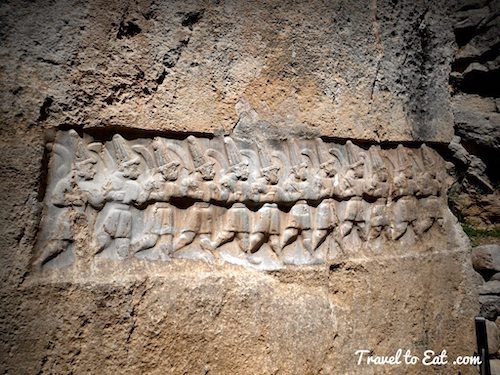
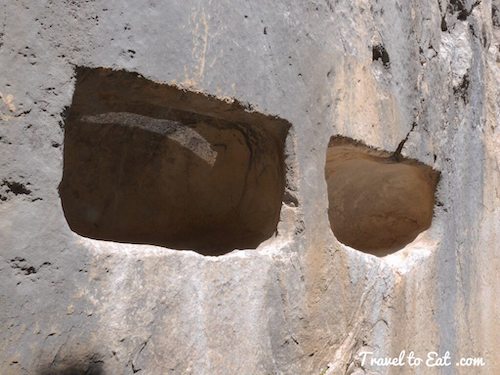
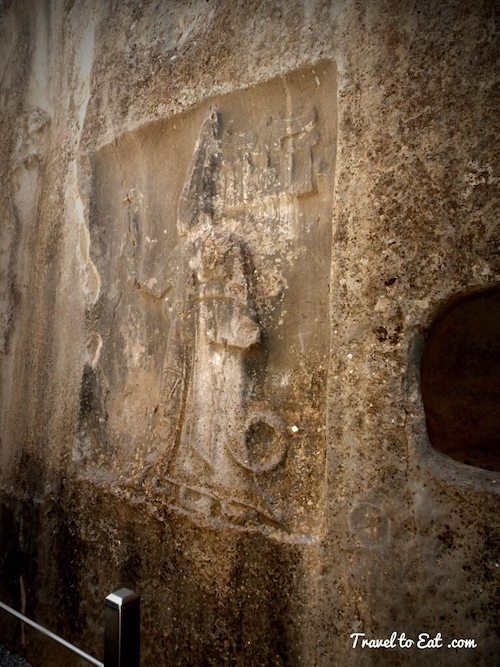
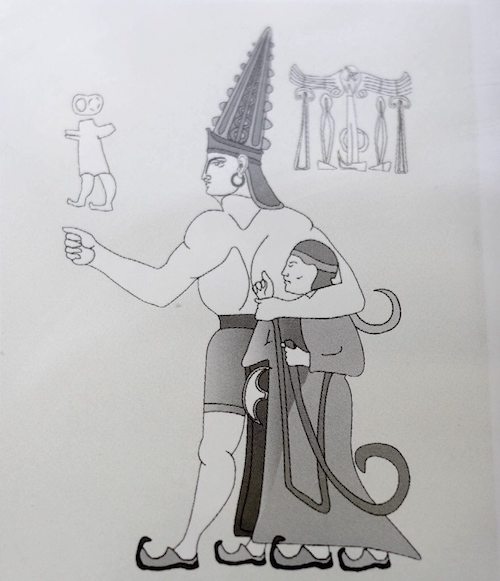
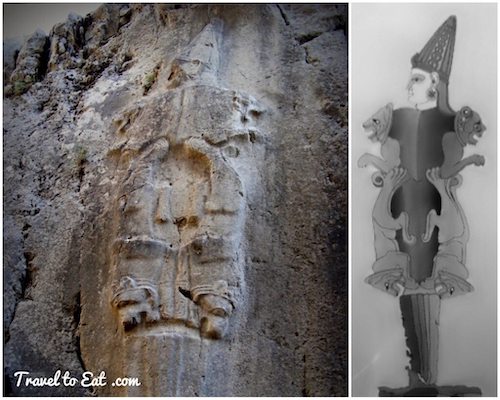
Accessible via a narrow passage, the B Chamber was probably a memorial chapel for Tudhaliya IV, dedicated by his son Supiluliuma II at the end of the 13th century BC. Buried until the end of the last century, the reliefs on the walls are much better preserved than those in the main chamber. The row of twelve gods with sickle-shaped swords on their shoulders is similar to the last row of male deities in Chamber A. On the opposite wall is the representation of a large sword with the hilt formed by fourlions. The pommel is in the shape of the God's head, probably Nergal, god of the Underworld. To the left of this relief a cartouche with the name of Tudhaliya IV is visible and, on the right side, this same king is shown in the embrace of the god Sarruma son of the storm god TeSup. The limestone block preserved on the floor near the entrance may represent the base for a statue of Tudhaliya. Niches in the back part of the chamber could have served for offerings.
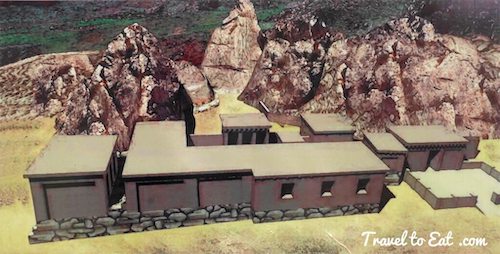


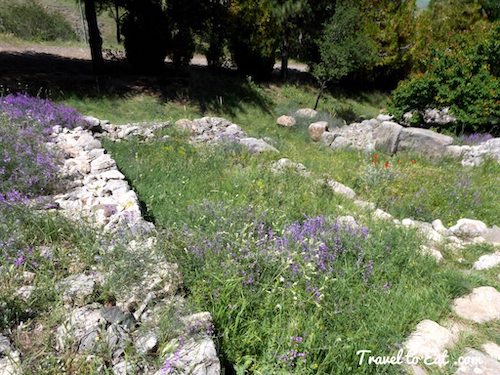
At first the alcoves were enclosed with a simple wall. During a later building phase, a small temple building was added, in front of the alcoves, and a large gateway was also added. A gateway was also added in front of the smaller alcove. During an even later phase, a larger building was added, and the gateways were rearranged to accommodate entrance to the smaller alcove. The temple buildings were rooms arranged around a courtyard. The religious ceremonies took place outside, with the rock relief figures in attendance. Apparently each alcove was used in slightly different ceremonies, which is now lost to us. In the larger alcove, one wall has mostly gods, while the other has mostly goddesses. At the meeting point of the two walls are found the chief divinities. The smaller alcove seems to have been devoted to one of the past kings, either Tudhaliya II or III. The alcove seems to have been used exclusively for King Tudhaliya IV during his lifetime.
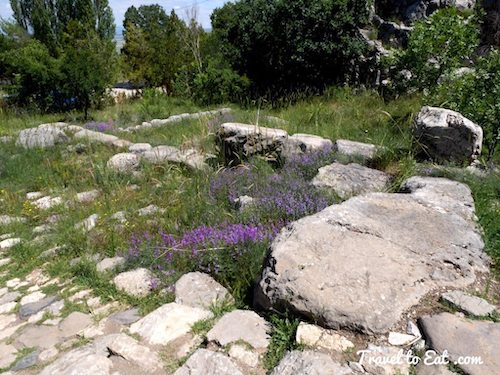
In Chamber A, the pantheon of Hittite gods seems to have assembled to witness the union of heaven and earth. All religions seek to reconcile the secrets of birth and death, and since no person has penetrated the mysteries of either event, they seek to extrapolate the seasons, the lunar cycles, the stars, the daily rise and setting of the moon and sun to the mysteries outside our vision. Here, in this ancient and peaceful place, we find yet another sanctuary devoted to this goal. Despite our modern preconceptions, our belief in science, our distrust of mystery, we can still find solace and peace in this remote four thousand year old sanctuary. I have visited more cathedrals and churches than most, but this place is special. Like Stonehenge, it exudes spirituality, something beyond the capabilities of human architects.
[mappress mapid=”58″]
References:
Peace and Power: http://sacredsites.com/middle_east/turkey/yazilikaya.html
Hattusa Uranus Guide: http://www.zerobooksonline.com/eng/product_details.asp?cat=&subcat=&product=8329
Wikipedia: http://en.m.wikipedia.org/wiki/Yaz%C4%B1l%C4%B1kaya
Hittites: http://s3-ap-southeast-2.amazonaws.com/jigsydney/general/PDF/278874~hittites.pdf
EC Krupp: http://members.bib-arch.org/publication.asp?PubID=BSAO&Volume=3&Issue=2&ArticleID=13

